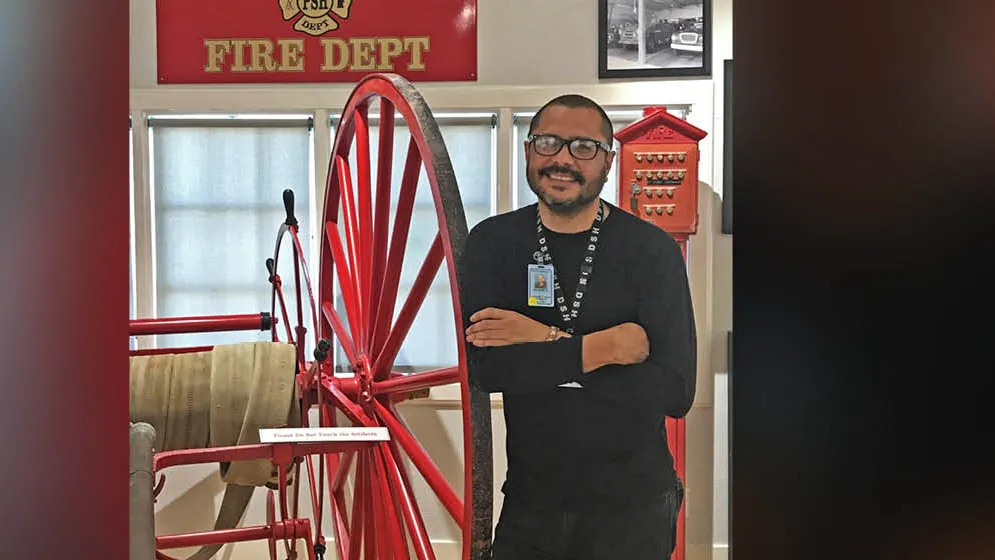Alan Llavore | Office of Strategic Communication | (909) 537-5007 | allavore@csusb.edu

The intriguing history of Patton State Hospital, forensic psychiatric hospital in San Bernardino, was highlighted during a presentation by Anthony Ortega, a Cal State San Bernardino alumnus who is the hospital’s historian and a licensed clinical social worker.
Ortega, who earned his Master of Social Work degree in 2000 at CSUSB, shared his interest in the hospital located about 10 miles from the campus during a March 29 presentation of the Disability Studies Lecture Series. Ortega became interested in the history of psychiatry when he was a social work intern at Patton in 1998
Invited by Tiffany Jones, CSUSB professor of history, to present in her History of Madness class, Ortega discussed the institution’s history from its inception in 1890 until today. He revealed the important role that Patton State Hospital, the largest psychiatric institution in California, played in the surrounding community and its transition through the various stages of psychiatric practice.
Patton, which opened its doors in 1893 and was originally called the Southern California State Asylum for the Insane and Inebriates, has a plethora of historical archives and artifacts that are stored within its walls.
Over the course of two years, Ortega, with the assistance of graduate student, Shannon Long, and CSUSB student interns supervised by Jones, designed and facilitated the opening of the hospital’s museum on the hospital grounds in 2015. The museum was a labor of love for Ortega and CSUSB students who researched and helped archive the history of the institution.
Two CSUSB public history students, Jesus Jimenez and Samantha Collaso, are currently interning at the museum and archive room. The museum is open to the public upon reservation only.
Ortega’s talk was a precursor to a CSUSB museum tour that will take place in late April, just before mental health awareness month in May.
Ortega spoke eloquently about the inception of the hospital, the Kirkbride architectural design, and the significance of the hospital to the local community. In addition, he discussed some of the “shocking” treatments that were administered, such as malaria therapy, insulin shock therapy, hydrotherapy, electroshock therapy (ECT), and lobotomies – all of which, with exception of ECT, are no longer utilized.
“Understanding the history of mental health is vital to giving context to present day discussions about the treatment of those needing mental support and removing the stigma,” Jones said. “Mr. Ortega’s wonderful presentation is just one example of how representative the treatment of so-called ‘mad’ people is reflective of our larger institutional and political history. I am always so pleased to work with Mr. Ortega on projects that promote this often-ignored history.”
For information about the upcoming CSUSB-specific museum tour, email Tiffany F. Jones, Department of History, at tjones@csusb.edu.